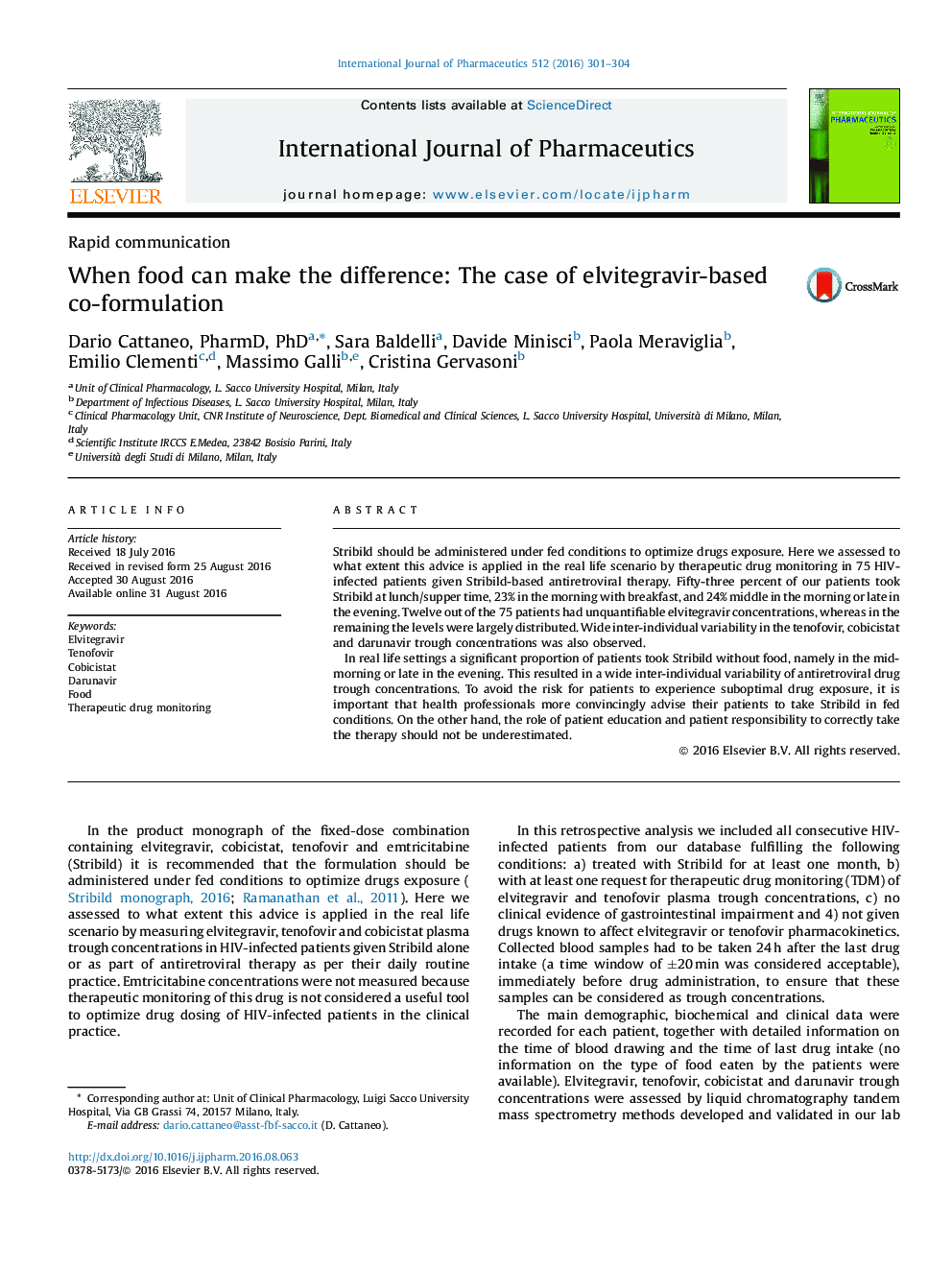| Article ID | Journal | Published Year | Pages | File Type |
|---|---|---|---|---|
| 2500800 | International Journal of Pharmaceutics | 2016 | 4 Pages |
Stribild should be administered under fed conditions to optimize drugs exposure. Here we assessed to what extent this advice is applied in the real life scenario by therapeutic drug monitoring in 75 HIV-infected patients given Stribild-based antiretroviral therapy. Fifty-three percent of our patients took Stribild at lunch/supper time, 23% in the morning with breakfast, and 24% middle in the morning or late in the evening. Twelve out of the 75 patients had unquantifiable elvitegravir concentrations, whereas in the remaining the levels were largely distributed. Wide inter-individual variability in the tenofovir, cobicistat and darunavir trough concentrations was also observed.In real life settings a significant proportion of patients took Stribild without food, namely in the mid-morning or late in the evening. This resulted in a wide inter-individual variability of antiretroviral drug trough concentrations. To avoid the risk for patients to experience suboptimal drug exposure, it is important that health professionals more convincingly advise their patients to take Stribild in fed conditions. On the other hand, the role of patient education and patient responsibility to correctly take the therapy should not be underestimated.
Graphical abstractFigure optionsDownload full-size imageDownload high-quality image (70 K)Download as PowerPoint slide
